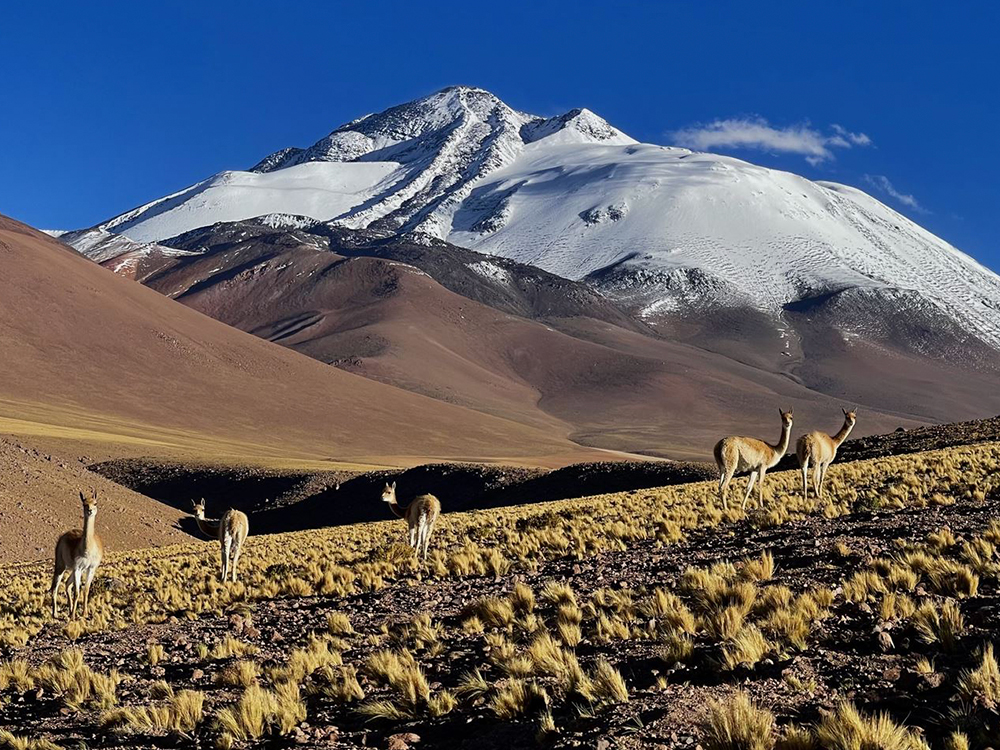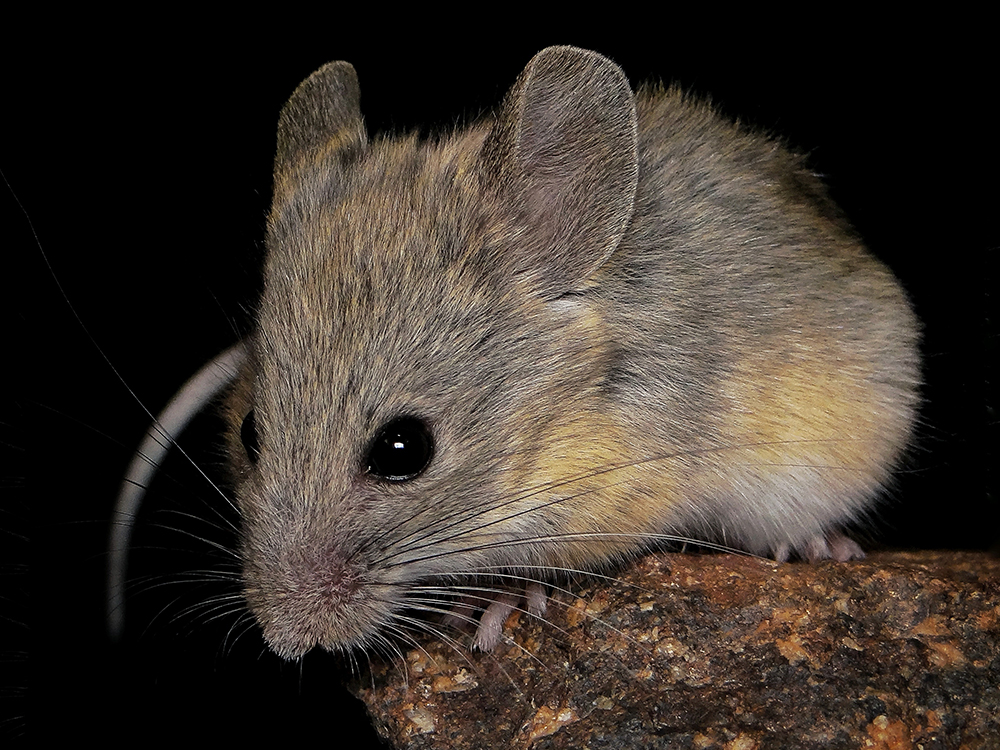RESEARCH
The primary focus of my research is the genetic and mechanistic basis of adaptive phenotypic evolution. In my lab we address questions about biochemical adaptation by integrating evolutionary analyses of DNA sequence variation with mechanistic appraisals of protein function, and we address questions about physiological adaptation by integrating functional genomics, population genomics, and experimental studies of whole-animal physiological performance. Much of our current work involves experimental studies of physiological phenotypes in high-altitude mammals to identify mechanisms of hypoxia adaptation.
PHYSIOLOGY AND GENOMICS OF HIGH-ALTITUDE ADAPTATION
Our main area of research is motivated by questions about the mechanistic basis of hypoxia adaptation in high-altitude mammals. Our current study animals include a number of Andean mice (Phyllotis and Abrothrix) and North American deer mice (Peromyscus). This work integrates measures of whole-animal physiological performance (thermogenic capacity and aerobic exercise capacity in hypoxia) and numerous subordinate traits (respiratory, cardiovascular, and metabolic) with genomic transcriptional profiles. This integrative approach enables us to dissect the mechanisms underlying evolved changes in organismal performance and – in combination with genome-wide surveys of DNA polymorphism – sheds light on the genetic underpinnings of adaptive physiological change. These projects involve extensive field work and involve a close collaboration with Graham R. Scott (McMaster University, Canada), Grant B. McClelland (McMaster University, Canada), Guillermo D’Elia (Universidad Austral de Chile), Juan Opazo (Universidad Austral de Chile), Zac Cheviron (University of Montana), and Jeff Good (University of Montana).
MECHANISMS OF ADAPTIVE PROTEIN EVOLUTION
Globin proteins as a model system
Another one of our main projects involves a systematic comparative study of hemoglobin adaptation to hypoxia in high-altitude vertebrates. This research is motivated by questions about the repeatability and predictability of molecular adaptation, and the roles of mutational pleiotropy and epistasis in shaping trajectories of protein evolution. Specifically, we are testing hypotheses about how pleiotropic trade-offs and epistatic interactions influence the selective accessibility of alternative mutational pathways during adaptive protein evolution. Our functional studies of native hemoglobins in mammals and birds are complemented by manipulative experiments that enable us to relate site-specific changes in hemoglobin structure to adaptive changes in blood biochemistry. Specifically, we are using a combinatorial protein engineering approach based on site-directed mutagenesis to measure the phenotypic effects of specific amino acid mutations in recombinant hemoglobins.
GENE DUPLICATION, GENOME DUPLICATION, AND EVOLUTIONARY INNOVATION
The globin gene superfamily as a model system
A third area of research is geared towards understanding the role of gene duplication and whole-genome duplication in the evolution of key physiological innovations. Gene duplication is thought to play an extremely important role in the evolution of novel protein and pathway functions. However, there is still much debate about the specific evolutionary mechanisms that are responsible for the initial retention and subsequent functional divergence of duplicated genes. The globin gene superfamily is an ideal model system for investigating these issues because it is one of the most intensively studied multigene families from the standpoint of molecular genetics and phylogenetic history. The globin gene families also provide an excellent example of the kind of physiological versatility that can be attained through functional and regulatory divergence of duplicated genes that encode different subunit polypeptides of the same multimeric protein. For example, in jawed vertebrates, different hemoglobin isoforms have been optimized for oxygen transport under the vastly different physiological conditions encountered during the embryonic, fetal, and adult stages of development. We are currently integrating comparative genomic analyses with experimental studies of protein function to investigate the evolution and functional diversification of the globin protein superfamily in the animal kingdom. This work involves a close collaboration with Federico G. Hoffmann (Mississippi State University) and Juan C. Opazo (Universidad Austral de Chile).
RESEARCH GRANTS AND FELLOWSHIPS
NIH – “Genomic and physiological mechanisms of hypoxia adaptation in high-altitude mice” (R01 HL159061, 2022-2026)
NSF – “Physiology of hypoxia adaptation in the world’s highest-dwelling mammal” (IOS-2114465, 2021-2024)
National Geographic Explorer Award (NGS-68495R-20, 2020)
Fulbright Foreign Fellowship Award, Argentina (2019)
NSF – “Role of endogenous carbon monoxide in hypoxia tolerance of diving animals” (IOS-1927675, 2019-2022)
NIH – “Mutational pleiotropy, epistasis, and the adaptive evolution of hemoglobin function” (R01 HL087216, 2014-2018, 2018-2022)
NSF – “UNVEIL: a collaborative research network to advance genome-phenome connections” (OIA-1736249, 2018-2022)
NSF – “Causes of parallel molecular evolution: Insights from protein engineering” (MCB-1517636, 2015-2018)
NSF – “Mechanisms and evolution of thermogenic capacity in high-altitude deer mice” (IOS-1354390, 2014-2017)
NIH – “Mechanisms of hemoglobin adaptation to hypoxia in high-altitude rodents” (R01 HL087216, 2008-2014)
NIH – National Heart, Lung, and Blood Institute, Diversity Supplement Award (2010-2012)
NIH – National Heart, Lung, and Blood Institute, ARRA Supplement Award (R01 HL087216-S1, 2009-2011)
NSF – “The mechanistic basis of parallel evolution: Functional analysis of hemoglobin polymorphism in Andean birds” (IOS-0949931, 2010-2013)
NSF – “A test of adaptive divergence across altitudinal gradients: Population genomics of deer mice” (DEB-0614342, 2006-2009)


